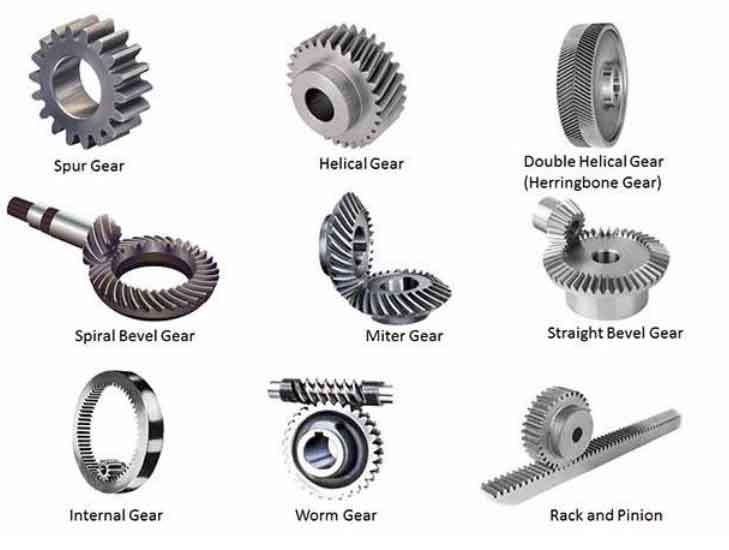Helical gears and spur gears are two commonly used gear types, each with its own advantages and applications. Understanding the differences and comparative analysis between helical gears and spur gears can help in selecting the appropriate gear type for specific mechanical systems. Let’s delve into the key factors for comparison:

- Tooth Profile: The most noticeable difference between helical gears and spur gears is their tooth profile. Spur gears have straight teeth that are parallel to the gear axis, while helical gears have teeth cut at an angle (helix angle) along the gear’s circumference. The helical tooth profile of helical gears enables smoother and quieter operation compared to the abrupt engagement of spur gears.
- Noise and Vibration: Due to their gradual tooth engagement, helical gears operate with reduced noise and vibration levels. The angled teeth of helical gears minimize sudden impacts, resulting in quieter operation compared to spur gears, which can generate more noise and vibration due to their straight teeth.
- Load Distribution: Helical gears offer better load distribution compared to spur gears. The helical tooth profile allows for multiple teeth to be engaged simultaneously, resulting in a larger contact area and improved load-carrying capacity. This leads to reduced stress concentrations on individual teeth and improved overall gear system performance.
- Efficiency: Helical gears generally exhibit higher efficiency compared to spur gears. The gradual engagement of helical teeth reduces sliding friction and allows for a more efficient transfer of power. Additionally, the increased contact area and improved load distribution in helical gears result in lower losses due to friction, making them more efficient in power transmission.
- Axial Thrust: Helical gears generate an axial thrust force due to their helical tooth arrangement. This axial thrust needs to be properly managed to prevent excessive axial loading on gear shafts. Spur gears, on the other hand, do not generate axial thrust. Techniques such as thrust bearings or herringbone gear arrangements can counteract the axial thrust in helical gears.
- Design Complexity and Manufacturing: Spur gears are relatively simpler in design and easier to manufacture compared to helical gears. Helical gears require more complex manufacturing processes to produce the angled teeth accurately. Additionally, the angled teeth of helical gears necessitate specialized considerations in gear design, such as helix angle selection and gear alignment.
- Applications: Spur gears are commonly used in applications where simplicity and cost-effectiveness are prioritized, such as in small appliances, printers, and simple machinery. Helical gears are suitable for applications that require smooth operation, high load capacity, and reduced noise, such as automotive transmissions, industrial machinery, and heavy equipment.
In summary, helical gears offer advantages such as smoother operation, better load distribution, higher efficiency, and reduced noise compared to spur gears. However, they are more complex to manufacture and may require additional considerations for managing axial thrust. Spur gears, on the other hand, are simpler and more cost-effective but may generate more noise and have limited load-carrying capacity. Selecting the appropriate gear type depends on the specific requirements, performance objectives, and constraints of the mechanical system in question.
